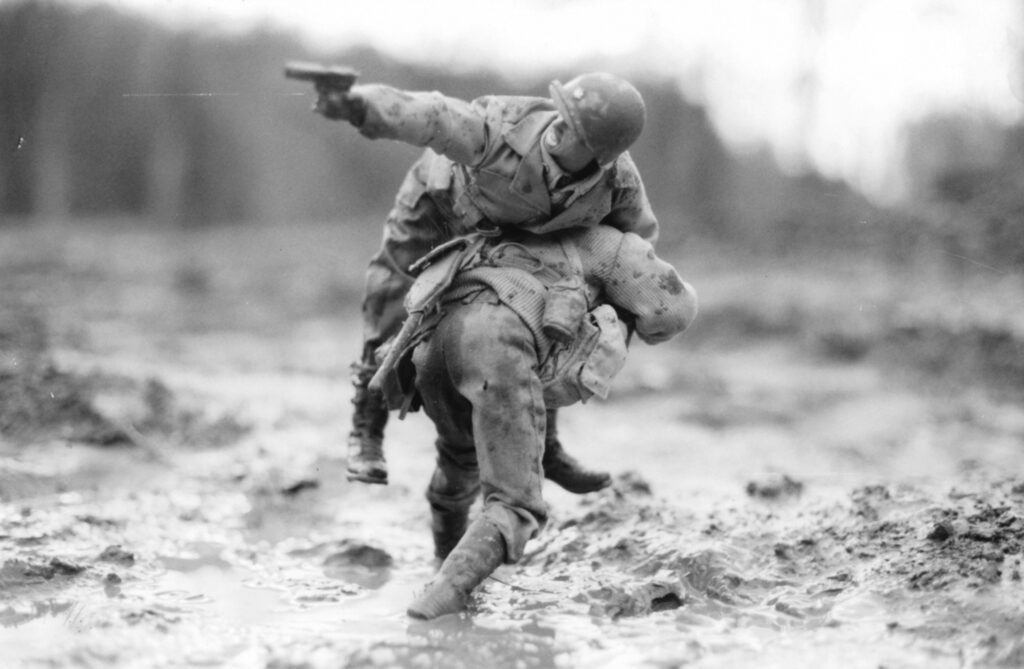In this article, we delve into the intersection of art and war, focusing on the military’s representation in music and popular culture. War has always been a prevalent theme in art, from ancient paintings to modern films. Music, in particular, has been a powerful tool in inspiring troops, boosting morale, and commemorating the fallen. Iconic songs like ‘The Star-Spangled Banner’ and ‘We Will Rock You’ are deeply intertwined with war and patriotism. War stories in popular culture have evolved, reflecting changing attitudes towards conflict and the military. Despite controversy, war art plays a crucial role in remembering the sacrifices of those who served and died in battle. Art and popular culture continue to shape public perceptions of war and the military, provoking thought and reflection on the realities of conflict.
The Intersection of Art and War: The Military’s Representation in Music and Popular Culture
War has always been a prevalent theme in art and popular culture. From ancient cave paintings depicting battles to modern day blockbuster movies, the military has been a source of inspiration for artists across various mediums. Music is no exception to this trend, with many songs and compositions inspired by the bravery, sacrifice, and tragedy of war. In this article, we will explore the intersection of art and war, focusing on the military’s representation in music and popular culture.
The Power of Music in War
Music has long been used as a tool to inspire troops, boost morale, and commemorate the fallen in times of war. From traditional military marches to protest songs decrying the horrors of conflict, music has played a significant role in shaping public perception of the military and warfare in general. During times of war, music has the power to bring people together, evoke powerful emotions, and provide a sense of unity and solidarity.
Iconic Songs of War
There are many iconic songs that have become synonymous with war and the military. One of the most famous examples is ‘The Star-Spangled Banner’, the national anthem of the United States. Originally composed as a poem by Francis Scott Key during the War of 1812, the song has since become a symbol of American patriotism and resilience.
Another iconic song of war is ‘We Will Rock You’ by the British rock band Queen. While not explicitly about war, the anthemic chant of the song’s chorus has been adopted by sports teams and military units around the world as a rallying cry for victory and solidarity.
War in Popular Culture
War has also played a prominent role in popular culture, with many films, television shows, and video games exploring the themes of conflict, heroism, and sacrifice. From classics like ‘Saving Private Ryan’ and ‘Apocalypse Now’ to more recent offerings like ‘American Sniper’ and ‘Dunkirk’, war films have the power to transport viewers to the front lines and provide a glimpse into the realities of battle.
The Evolution of War Stories in Popular Culture
Over the years, war stories in popular culture have evolved to reflect changing attitudes towards warfare and the military. While early war films often portrayed conflict in a glorified and romanticized manner, more recent offerings have taken a more nuanced and critical approach to the subject. Films like ‘Platoon’ and ‘Full Metal Jacket’ have shed light on the psychological toll of war on soldiers, while ‘The Hurt Locker’ and ‘Zero Dark Thirty’ have explored the complexities of modern warfare and counter-terrorism operations.
The Controversy of War Art
War art has always been a controversial subject, with artists often facing backlash and criticism for depicting the horrors of conflict in their work. From Pablo Picasso’s anti-war masterpiece ‘Guernica’ to Banksy’s provocative street art, war art has the power to provoke, challenge, and unsettle viewers with its graphic depictions of violence and suffering.
The Role of Art in Remembering the Fallen
Despite its controversial nature, war art plays an important role in commemorating the sacrifices of those who have served and died in battle. From memorial sculptures and paintings to poignant poetry and prose, art has the power to immortalize the memories of those who have given their lives in service to their country.
Conclusion
The intersection of art and war is a complex and multifaceted subject, with music and popular culture playing a significant role in shaping public perceptions of the military and conflict. From iconic songs of war to powerful war films, art has the power to inspire, unite, and provoke thought about the realities of warfare. As we continue to grapple with the legacy of war in our society, it is important to recognize the valuable contribution that art and popular culture can make in helping us understand and reflect on the profound impact of conflict on individuals and societies.
